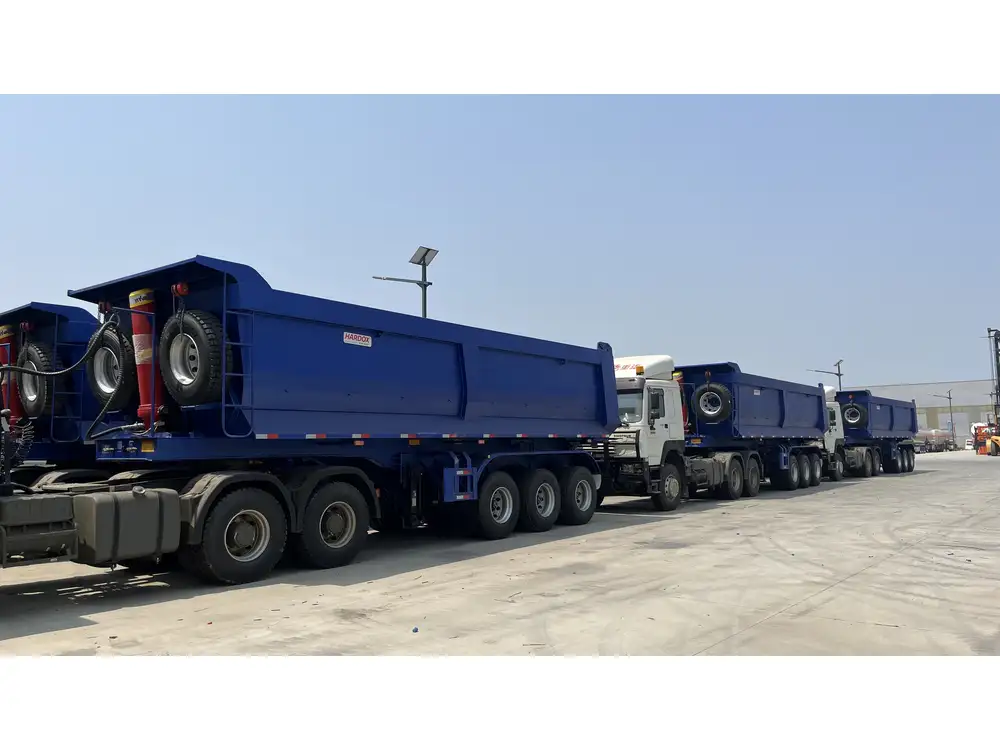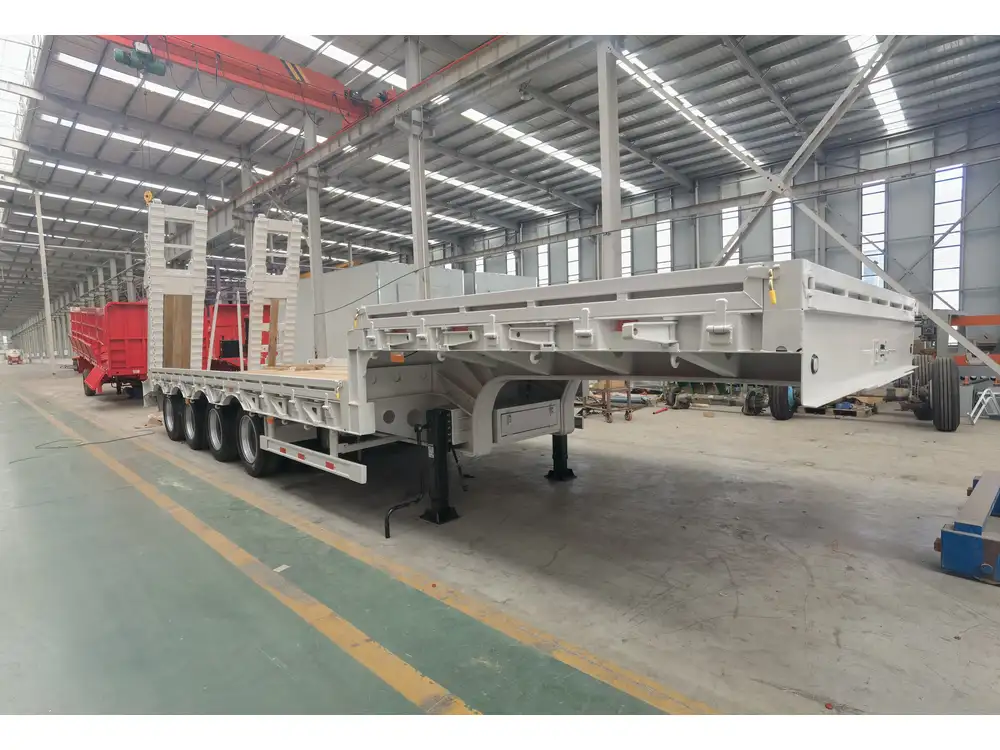Patching a curtain side trailer is a critical procedure for ensuring the longevity and operational efficiency of your vehicle. Curtain side trailers, engineered for versatility and ease of loading, often face wear and tear due to environmental exposure and rough handling. In this guide, we will detail the step-by-step process of effectively patching a curtain side trailer, addressing common issues, and providing insightful tips for maintaining the integrity of your trailer fabric.
1. Understanding the Structure of Curtain Side Trailers
Before diving into the patching process, it’s essential to grasp the anatomy of a curtain side trailer. These trailers typically consist of a sturdy frame with a flexible curtain material that can be rolled to the side. Understanding the components is crucial for identifying the right materials and methods needed for effectively repairing any damages.
| Component | Description |
|---|---|
| Frame | The rigid structure that supports the trailer and holds the cargo. |
| Curtain | The fabric that provides protection from the elements, typically made from PVC or canvas. |
| Side Rails | Horizontal bars that support the curtain’s structural integrity. |
| Load Binders | Mechanisms used to secure the load inside the trailer. |
2. Identifying Damage: What to Look For
Recognizing damages in your curtain side trailer is the first step toward an effective repair. Common forms of damage include:
- Tears or Rips: Occurring due to friction or external impacts.
- Punctures: Small holes that may arise from sharp objects.
- Seam Failures: Unraveling or splitting of seams due to stress or age.
- Dirty or Stained Areas: Not only aesthetic but can indicate underlying issues.
Take the time to thoroughly inspect your trailer for these types of damage. Use a flashlight to trace any irregularities in the fabric, as well as checking the frame for any signs of bending or dislocation.

3. Materials You Will Need for Patching
Selecting the right materials is paramount for a successful patching process. Here’s a list of essential items:
| Item | Purpose |
|---|---|
| Repair Fabric | Complementary material ideally made from the same fabric type as the curtain. |
| Fabric Glue | Specialized adhesive for bonding fabrics. |
| Duct Tape | Temporary hold and immediate sealing for punctures. |
| Seam Sealer | For reinforcing and sealing stitched areas. |
| Patch Kit | A commercial kit may include patches, glues, and tools. |
| Cleaning Supplies | Fabric cleaner and rag for pre-patching preparation. |
| Scissors or Utility Knife | For cutting the patch material. |
4. Step-by-Step Guide to Patching Your Curtain Side Trailer
Step 1: Preparation
Clean the Area: Begin by cleaning the damaged area thoroughly to remove dirt, grime, and other contaminants. Use a fabric cleaner and ensure the surface is dry before proceeding.
Survey the Damage: Once cleaned, reassess the damage. If there are any loose threads, trim them back to prevent further unraveling.

Step 2: Selecting and Cutting the Patch
Choose the Patch Material: Select a piece of repair fabric that matches the original curtain material closely in color and texture.
Cut the Patch: Cut the patch to size, ensuring it overlaps the damaged area by at least 2 inches on all sides. A rounded corner is preferable to minimize peeling.
Step 3: Applying the Patch
Temporary Hold: Using duct tape, temporarily secure the patch over the damaged area. This will help position it correctly during the gluing process.
Adhesive Application: Apply fabric glue to both the patch and the underlying fabric. Follow the glue manufacturer’s instructions for coverage and drying times.
Press and Secure: Firmly press the patch into place and allow it to set. Using weights or clamps can help maintain pressure during the curing time.
Step 4: Sealing the Edges
Seam Sealer Application: Once the glue has cured, apply seam sealer around the edges of the patch to prevent moisture infiltration and further wear.
Inspect the Seal: Make sure there are no gaps in the sealant as this can compromise the patch’s integrity.

Step 5: Final Inspection and Testing
Complete Drying: Allow the repaired area to dry thoroughly, adhering to the glue and sealant’s specified curing time.
Conduct a Test: Gently pull on the patched section to ensure its stability before returning the trailer to service.
5. Preventive Maintenance Tips for Curtain Side Trailers
While patching is a vital repair process, preventive measures can greatly extend the life of your curtain side trailer:
- Routine Inspections: Conduct regular inspections to identify potential issues early.
- Protective Coatings: Consider applying a UV-resistant coating to prevent sun damage.
- Cleaning: Regularly wash the curtain to remove dirt and prevent mold growth.
- Proper Loading Techniques: Ensure proper loading to minimize stress on the curtains and seams.
Inspection Checklist
| Item | Frequency | Action Needed |
|---|---|---|
| Curtain Material Condition | Monthly | Inspect for tears, rips, or stains. |
| Frame and Structure | Quarterly | Look for signs of bending or fatigue. |
| Load Securing Mechanisms | Before Each Trip | Ensure all load binders are functioning. |
| Cleaning and Care | Seasonally | Thorough wash and inspection for mold. |

6. Common FAQs About Curtain Side Trailer Patching
Q: How long will a patch last?
A: The longevity of a patch largely depends on the environment and exposure. However, with proper application and preventive measures, patches can last several months to years.
Q: Can I patch my trailer myself?
A: Yes, with the right materials and following the steps outlined, you can effectively patch your curtain side trailer without professional help.

Q: What if the damage is extensive?
A: If the damage covers a large area or involves structural components, consulting a professional repair service is recommended.
Q: How can I improve the durability of my repairs?
A: Regular maintenance, coupled with high-quality materials and sealants, will enhance the durability of your repairs.
7. Conclusion
Patching a curtain side trailer is a manageable task that significantly contributes to the trailer’s lifespan and your operational efficiency. With a thorough understanding of the assessment, preparation, the actual patching process, and subsequent maintenance, you can effectively restore your trailer’s integrity. Remember, an ounce of prevention is worth a pound of cure, so keep up with regular inspections and maintenance to minimize the need for future repairs.
By following these guidelines, you not only extend the life of your curtain side trailer but also ensure that it operates reliably and efficiently, safeguarding your investment and enhancing your logistics capabilities.



